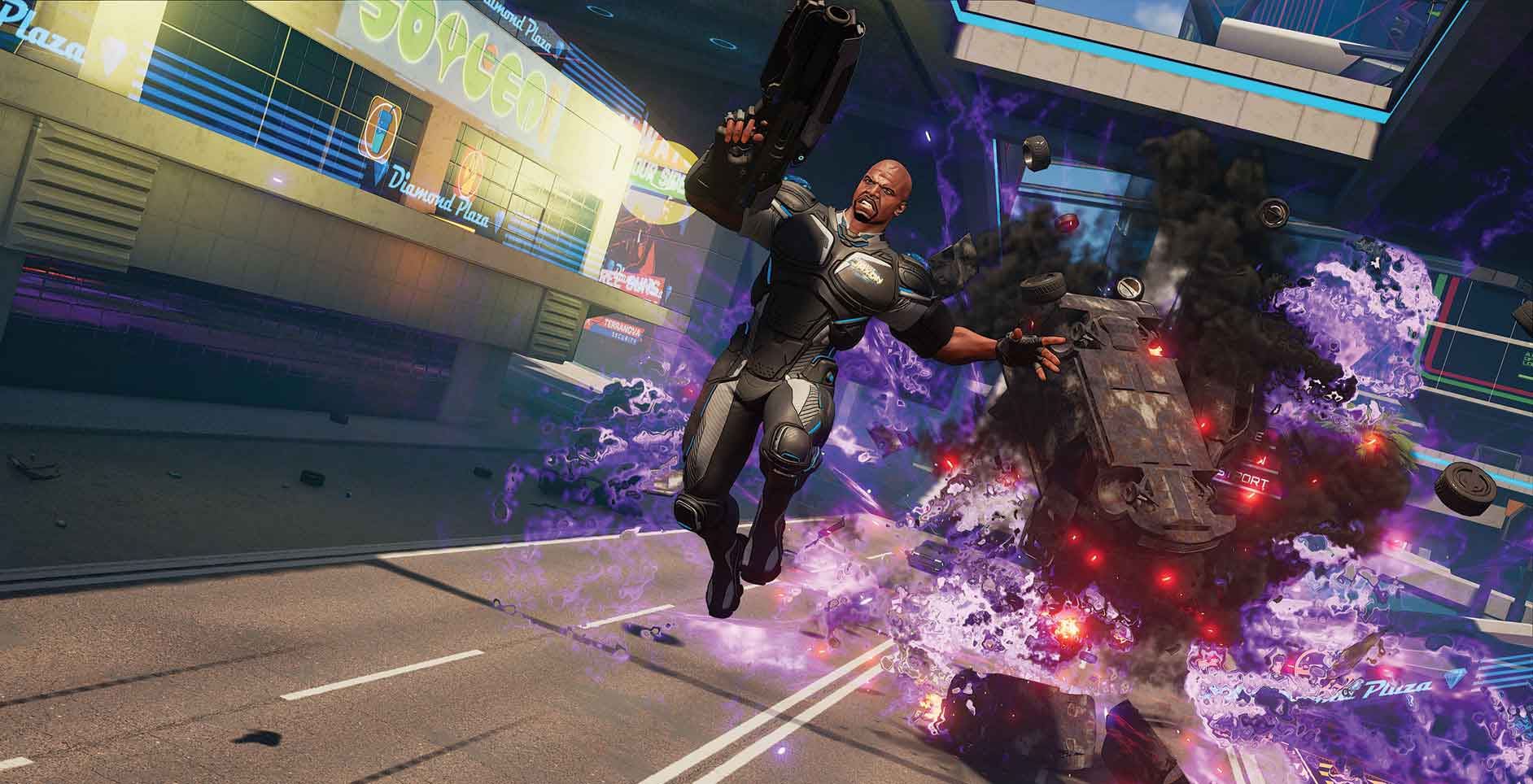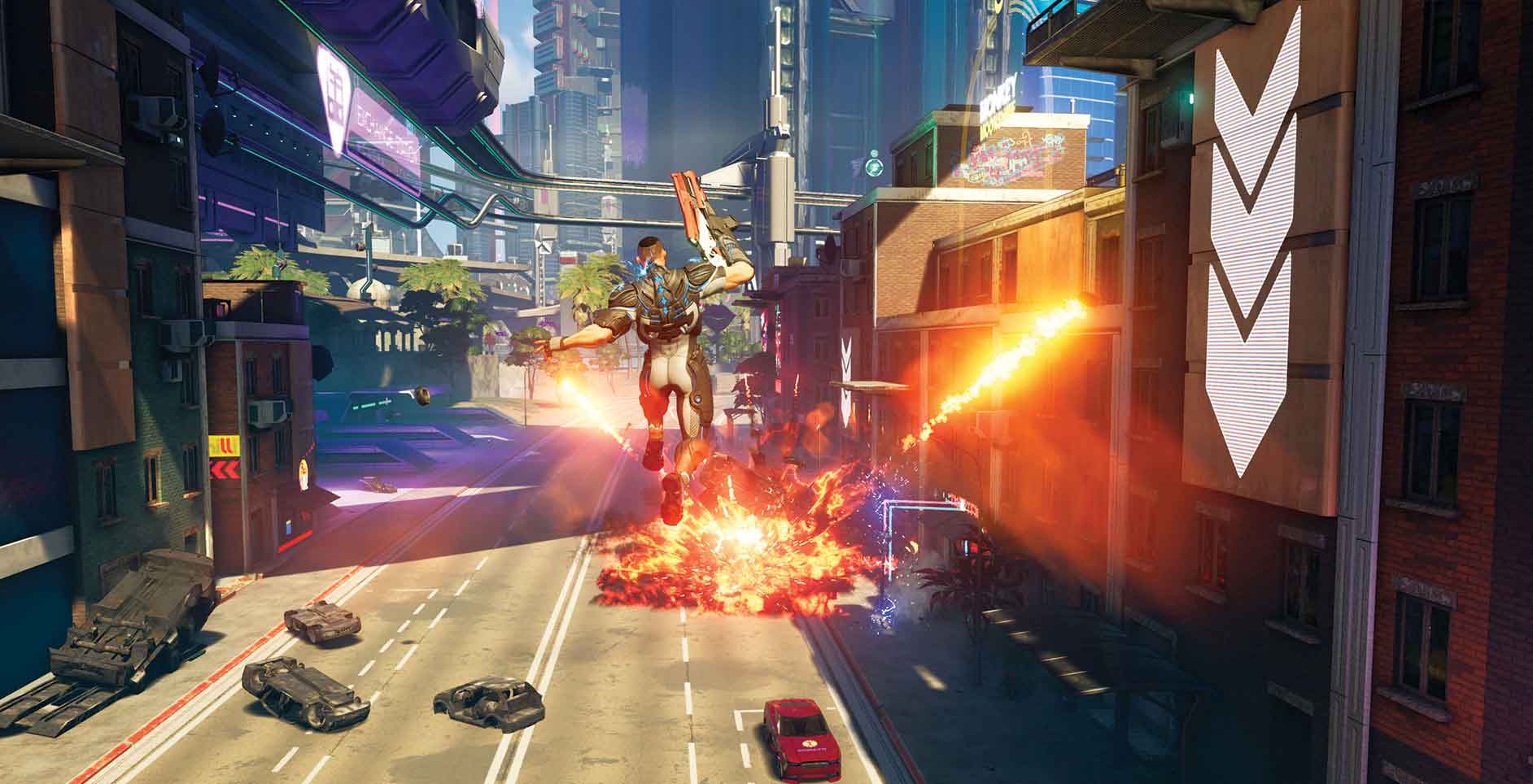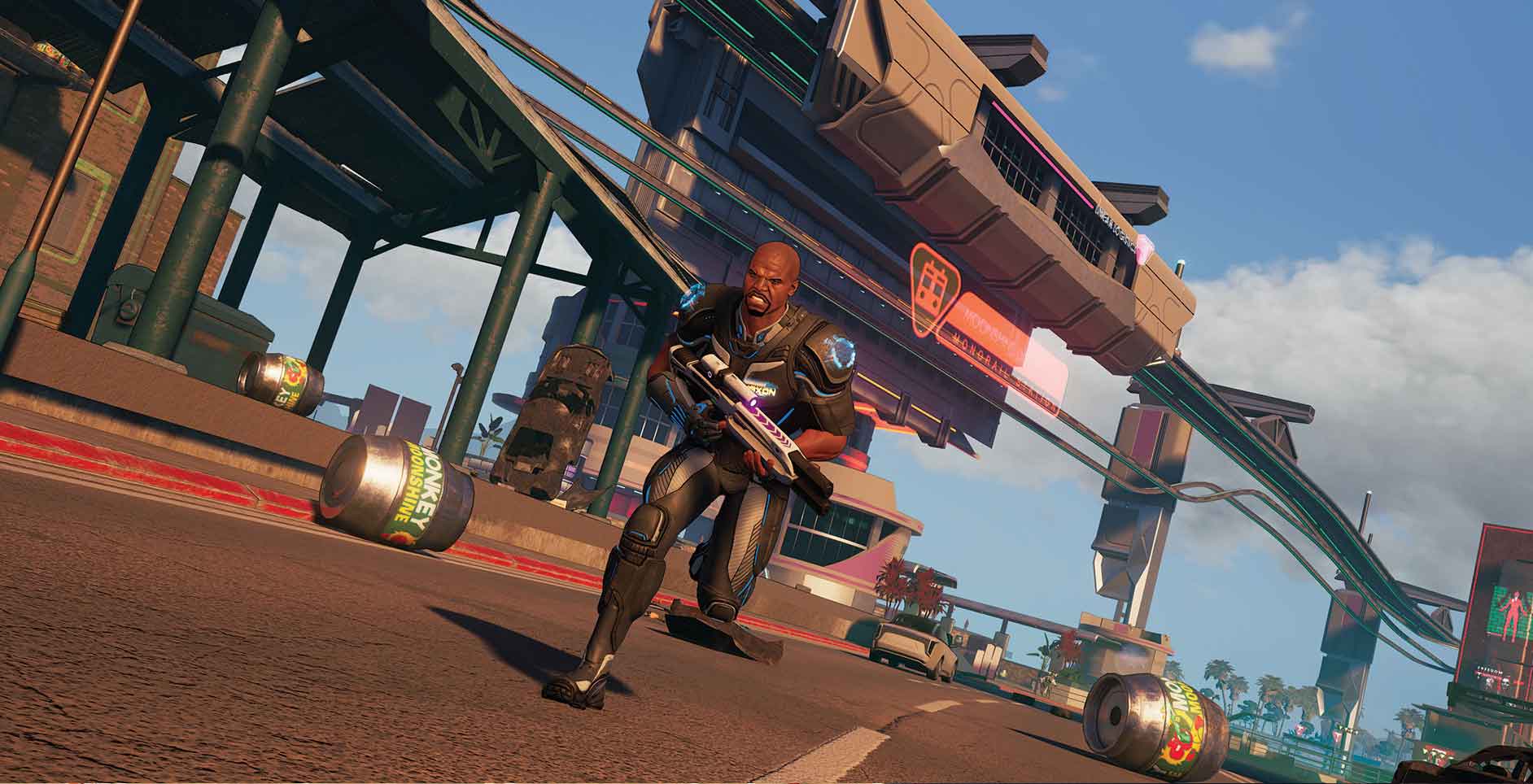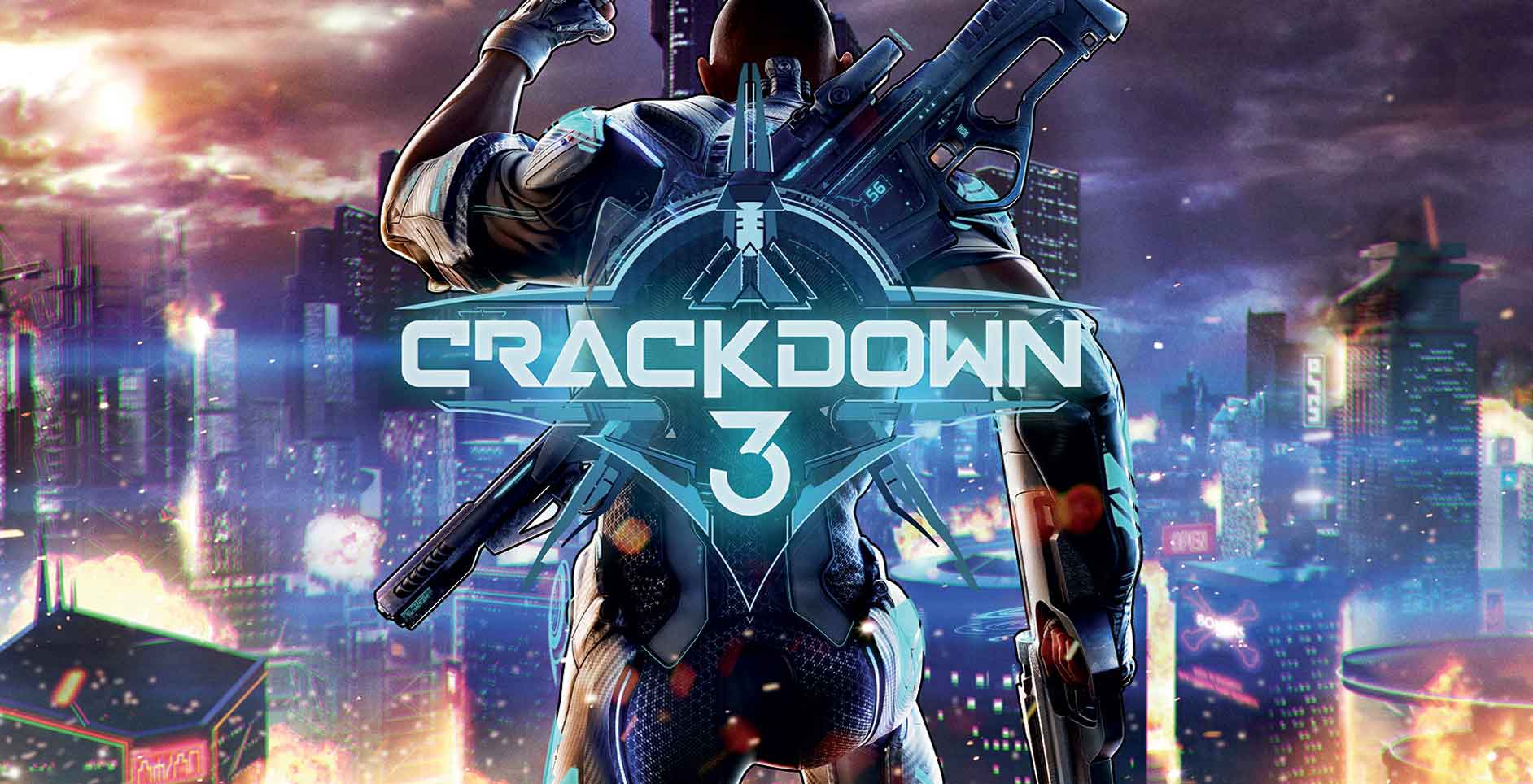I’m sure many Crackdown fans are hugely excited for Crackdown 3. After all, it’s been a while in the making’ beside the delays, it’s been nine years since Crackdown 2. According to the team at Microsoft Studios, it promises to be a “true Crackdown experience,” which I’m sure takes someone’s fancy. However, based on the slice of the game I recently had the opportunity to play, I’m sorry to say I won’t be amongst those eagerly anticipating its release.
That’s not to say there isn’t fun to be had with the game. Indeed there is, even as a first-time Crackdown player like me. It would appear that Crackdown 3’s primary focus is fun. Microsoft Studio’s Creative Director, Joseph Staten, and Head of Production, Jorg Neumann, confirmed this when I spoke to them last week. “I think the good news is that there are at least two axes of fun,” said Staten, “if you want to jump in just by yourself, within a big explosive playground of action – you just play through the campaign – Crackdown has that for you absolutely.”

“There’s also another side of the game – which hopefully you got a chance to play – which is Wrecking Zone. That is PvP in this destructive arena. So if you’re in that mood, the game has that for you too. So I’m hopeful that actually we can appeal to lots of different kinds of players and people want to play their kind of Crackdown.”
In fact, I did get the chance to play some of the Wrecking Zone multiplayer mode and enjoyed it a great deal. It’s a sort of ‘Kill Confirmed’ style mode that awards points to either side for killing enemies so long as they collect the tokens they drop upon death. It plays well into the sort of destructive chaos of Crackdown 3‘s multiplayer, which had us bouncing between skyscrapers, launching rockets at each other in the hope you’d score a couple of eliminations before eventually, a rocket found you.

It sounds simple, and to an extent it is; it very much has an arena shooter vibe, albeit with an insane amount of verticality and speed. You are highly agile and are able to jump and dash multiple times before you’re grounded. The game adjusts with very generous aim assist, to the point that your vision tracks the player when aiming down the sight. However, they’ll take a significant amount of damage requiring you to hunt them down or chain multiple attacks together to deal with them quickly. Evading fire sounds straightforward, the amount of hidey holes dotted up each building provided ample cover momentarily, but my foes quickly found they could punch holes in the walls, ceiling and floor – or bring the entire building down – which meant I was exposed once more.
The destruction is, of course, all powered by the cloud, and worked pretty damn well in my mind. There was nothing that made it obvious the processes wasn’t being run there on my console. The environment reacted as I expected it to – with all the explosives detonating about the place – without any delay. Its cool tech such that means, as Staten notes, “if you’ve got a first generation Xbox [One], or you’ve got a Scorpio [Xbox One X], that experience of destruction is the same.”
“It is a total change as far as to what the industry can achieve long-term,” said Neumann.
“As we’re entering these joint open-worlds, it’s going to be super interesting what people do with persistence. In this case, it’s persistence in destruction, but it’s persistence in general that will go up a lot with all the cloud processing.”

The destruction helps make for frantic, fast-paced and most importantly, fun, multiplayer, even if it doesn’t overly fresh otherwise. Besides it being literally ground-breaking, it doesn’t feel it figuratively, and I can’t see it sinking its hooks into me. I can certainly see how you might team up and develop a bit of a strategy to make for some pretty competitive matches, but I don’t know if it’s got the sort of meta-game that might give it lasting appeal. Perhaps having a better look at the roster of maps (we only played several games on the one map), the full extent of the progression system and the other game modes will change my mind.
The problem was only emphasised in the brief glimpse I got of the main campaign. Of course, the story is not to be taken seriously despite its gloomy, dystopian, almost apocalyptic premise. It quickly becomes painfully obvious this game prioritises “over-the-top fun”, but it would appear to me to be a rather uninspiring open-world, story missions dotted about with loosely related side-missions and checkboxes in between. It looks to be everything we’re familiar with, with lots of shooting, without contributing anything fresh. My first task involved climbing up a tower to claim a power station with the sort of climbing mechanics we’ve seen a million times before, but not nearly with the fluidity or presentation we’ve seen from the likes of Tomb Raider or Spider-Man.

Perhaps I needed more time with it, but it seemed as if I wasn’t going to be doing much other than bouncing about and shooting a lot of baddies in an open-world comparatively bland to recent games. Over time, I’d hope your character dramatically strengthens, acquires crazy new weapons, and the enemies become bigger and badder such that the challenge becomes more than extra waves of enemies, or a taller tower to climb, but requires more than point and shoot combat.
Staten promises “a playground of fun, with very few restrictions, you can go anywhere… a different kind of open-world experience… a big giant sandbox of fun.” I hope that’s the case.



